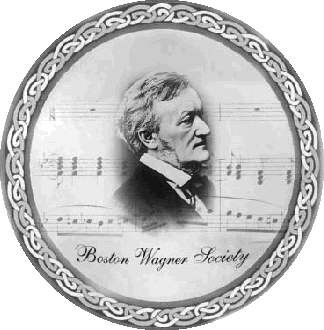Dr. Bauer Talks about King Ludwig II
On October 24, the eminent Wagnerian scholar Dr. Oswald Bauer, secretary general of the Bavarian Academie of Fine Arts and chair at Ludwig-Maximilians University and at the Academy of Visual Arts in Munich, came to Boston to present the first in a series of lectures devoted to the relationship between Richard Wagner and King Ludwig II. In the small hall of Hill House on Beacon Hill, a small but erudite audience of Wagnerians listened with careful attention to his prepared remarks and then asked wonderfully thought-provoking questions.
Dr. Bauer, who has worked with Wolfgang Wagner since 1974, presented a well-prepared lecture with relevant photographs/slides. Speaking cogently, clearly, and with enthusiasm, he addressed the problematic issues and history between the king and his protégé. To the ears of this listener, however, nothing new was offered in this prepared presentation. Virtually all of the material presented in this lecture is already well known. Nevertheless, slides of the three castles that Ludwig constructed, perhaps the world’s largest display of crystal and gilt, were, as always, a most welcome visual reminder of the king’s vivid taste.
Dr. Bauer focused exclusively on the Wagner-Ludwig relationship, which, to be fair, was the title of his lecture. However, it is almost a reductio ad absurdum to discuss these two personages outside the context of German history.
By far the most interesting point of the evening was the all-too-brief question-and-answer period following the prepared talk. Many fascinating questions and topics were raised by the audience, which was clearly knowledgeable on both Wagner and the king. As to the topic of the Nietzsche-Wagner relationship—which one listener raised—an entire lecture would not suffice to cover it. Regrettably, Dr. Bauer glossed over this provoking question. This listener found it rather sad that the basic fact of the king’s identity, his homosexuality, which was in continual and profound conflict with his Catholic faith, was not mentioned in the prepared lecture.
Likewise, nothing was said about what the composer and Cosima thought about this subject, although any astute reader of Cosima’s diaries would know that both Wagner and his wife found the king a most worthy object of contempt. How strange that such a contemptible object could nevertheless hold their precious festival house in the palm of his hand, perhaps another reason for the couple’s ambivalence. Like it or not, the history of the Bayreuth Festival is indeed a partial history of Germany.
Further, little if anything was said about how loathsome the king found Wagner’s thoughts on the German politics of the day, let alone the composer’s—outdone only by his wife—virulent anti-Semitism. All in all, this listener, an admittedly biased Ludwig-phile and Wagnerite, found that this lecture presented little that is unknown; the material would have better been addressed to people not of the Wagnerian persuasion and to those who knew nothing about the king, his relationship to Wagner, and, to a sadly lesser extent, his importance in German history.
The one bit of information that this devoted Ludwig-phile/Wagnerian discovered was that to this day, the family of Dr. von Gudden, the psychiatrist who found King Ludwig insane, apologizes in print every July for the death of the beloved king and denies that von Gudden had anything to do with his “mysterious” death. As is well known, the king and von Gudden drowned under mysterious circumstances on June 13, 1886, following the king’s arrest and imprisonment in Schloss Berg. The decision to remove him from the throne was based on a psychiatric examination that in fact never took place. Instead, the testimony of the king’s valets, servants, and cabinet ministers about his curious behavior was sufficient to declare him “insane.” When asked for his opinion on the puzzle of the king’s death, Dr. Bauer claimed that Ludwig chose to commit suicide rather than be subjected to the indignities of imprisonment. This opinion conveniently glosses over the fact that strangulation marks! were found on von Gudden’s neck. This listener finds it far more probable that the king attempted to escape from captivity and von Gudden tried unsuccessfully to prevent it.
Perhaps Ludwig strangled his keeper and then suffered a fatal heart attack while trying to swim across Lake Starnberg to safety. In earlier days, when the king was fit, such a swim would have proven no challenge to him, but by 1886 his health was in serious question, and no doubt the strenuous exertions of subduing his keeper and then trying to swim across the lake brought on his demise. We will never know the real answer until the Wittelsbach family (the royal family) makes public its private archives. Until then, one can only speculate on the circumstances of the death of its best-known scion.
–Jeffrey Brody
Jeffrey Brody, a member of the Boston Wagner Society, is a composer, a pianist, and the music director of Longwood Opera.

